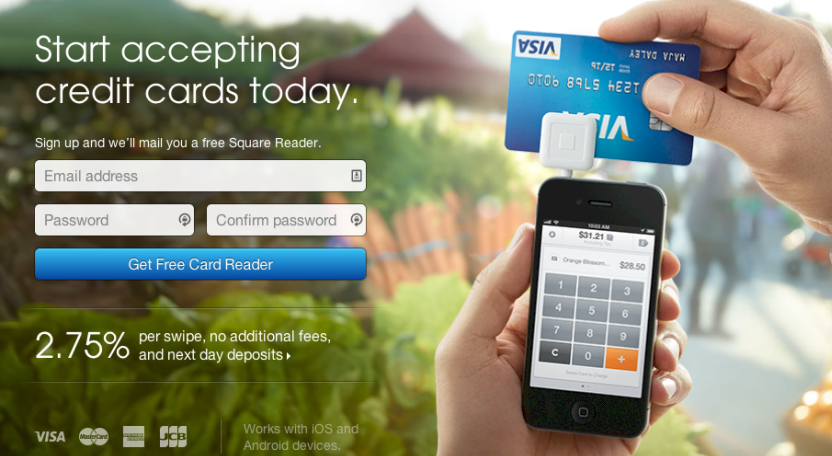The Ranking Factor of All Ranking Factors
If you haven’t gotten my ranking handbook, Top of the Web, you should get it now. In it I outline the 10 most crucial steps in getting your website to rank at the top of search.
So if I give the top 10 ranking steps, how can there be only “one factor that really matters?” Let me explain…
The one ranking factor that matters is traffic.
Engaged traffic to your site sends positive signals to the search engines that you have important information to share. If consumers are engaged with your site, they are likely interested in your content and are having a positive experience.
Search engines want to make good content available to more consumers. The way they do that is by giving you top priority in search queries—high ranking.
So, more engaged traffic can mean better visibility in search, especially since the things you do to drive engaged traffic include many of the ranking factors that I and other digital marketers use to improve ranking.
Where Most Go Wrong
Oddly, many digital marketers today have lost sight of this important search ranking factor. Instead of focusing on getting consumers to engage with you, they focus on the signals search engines use to measure traffic—rather than the traffic itself.

- inbound links
- original content creation
- social media engagement
- technical SEO elements such as meta title pages and internal linking structure
- keyword usage
- more
The problem with search signals is that they do not grow your business, engaged consumers do.
OK, so how do you get traffic to your business?
Let’s not jump ahead of ourselves. We need to distinguish between traffic and engaged traffic.
Traffic itself is not the goal and can even hurt your visibility if those visitors are not engaging with your website.
If a consumer lands on a page on your site, doesn’t like what they see and bounces off, they are not engaged. To search engines, that’s a poor user experience.
Get too many unengaged visitors and your site will lose visibility for the very search terms consumers used that brought them to you in the first place.
Google wants users to have a good experience using the Web. If they spend time on your site, fill out a web form or click through to your contact page, those are good indications that consumers are engaged and hopefully finding what they are looking for.
Those are the kind of signals you need in order to rank well in search.
So here’s what you need to do to get that engaged traffic:
Create a Good User Experience
Before doing anything else, make sure your website provides a good user experience. Your web developer should have done all the technical stuff when creating your site like giving each page a strong title and compelling meta description.
Your pages should be clean and uniform so it’s easy for your visitors to navigate. Make consumers work too hard and they will bounce.
Don’t try to get too cute. Your website is not a place to be creative or stand out.
The elements of your page should be where visitors expect them. Consumers are accustomed to a navigation menu at the top and important content down the middle of the page.
Pages should load quickly and be mobile friendly.
Above all, create good content—or rather, create extraordinary content. Go above and beyond what your competitors are doing and give your visitors information they can’t get anywhere else. Focus on the benefits the customer will receive by your service or product.
Nobody really cares about your company values or mission statement. Nor do they care how long you’ve been in business – and no one is spending time admiring all your fancy artwork.
Visitors come to your website because they want you to solve their problems. Tell them how you plan to do that.
Below is a landing page that is used by many in my industry to demonstrate excellent user experience. It does everything right from identifying consumer pain to addressing that pain with short descriptions and a relevant image. There is no fluff – everything on this page serves a purpose in moving the visitor toward a sale.

Expand Your Online Footprint
Your website isn’t enough anymore. It’s a great start and should act as your basecamp, but there are a whole bunch of other websites out there that can create traffic and new customers.
If you’ve been in business for a while, search for your company name and you’ll see plenty of web platforms where you are listed. Are consumers visiting these directories and profile pages as well? If so, you should be engaging them there.
These platforms include Yelp, Angie’s List, Trip Advisor, Urbanspoon, Foursquare and others. There should be an easy path from your profile on these platforms to the page on your website that is most relevant, often your home page.
Above all else, make sure every web property and directory that lists your business has the correct name, address and phone number as well as contact information and web address. If it doesn’t, not only are you losing potential visits, but you could be confusing the search engines.
Googlebots use some directories to gather information about your business and if there is a discrepancy, they may not know which one is correct. Google could display the wrong information or not even show your business at all.
Boost Your Online Customer Reviews
Among the directories that list your business are web properties like Google My Business, Yelp and Yahoo Local. In addition to business directories, these listings are also customer review platforms for businesses that serve a local community.
In some cases, your Yelp profile can show in search results even if your website does not.
Some customers will decide to use your business just based on consumer reviews from these platforms and may never even visit your website.
Make sure you maintain a good rating. Ratings are usually between one and five stars. If yours is less than five, reach out to customers to rectify any problems.
Be sure to encourage happy customers to rate and review your business, especially in Yelp and Google.
If you haven’t claimed your Google My Business profile, make sure you do it now. Fill out a complete profile and be sure to select accurate categories.
Get Links that Consumers Actually Follow
An inbound link is nothing more than a link from one web property to another. Think of them as referrals from other websites.
Visitors will follow links from other websites to yours and will hopefully be interested in your product or service. This is a great source of traffic and getting links from niche-relevant websites will increase visitor engagement.
Getting relevant inbound links is a practice that you should always pursue.
Inbound links are also an important ranking signal on their own. If you get enough referrals, search engines will want to show your site near the top of their results so other consumers can find you as well.
You can never have enough authoritative, industry relevant links directing consumers to your website. Never pay for links or use link schemes.
Get the Word Out with Social Media
Not all companies can profit from social media, but platforms like Facebook, You Tube, Instagram and even Linked In have become so important that for some business owners, social media is their bread and butter.
You’ll have to determine for yourself if a social media campaign is a good source of traffic for you, but in most cases, there is a platform out there that can benefit your business.
Engage with consumers here and create a profile page for your company if you can. The trick is not to promote yourself all the time. Engage with others on a personal level and be a contributor.
We all get tired of the real estate agent who never posts anything other than their latest listings.
Below, we can see how Floating Leaf Eco-Retreat effectively uses images and great customer experiences on their Facebook page to drive traffic to their website.

Build Your List
It always astounds me how many business owners do not add clients, prospects, networking partners and others to a marketable list. The people who have showed interest in you in the past are usually the ones who are likely to buy from you in the future. For many business owners, their list is a goldmine of potential business.
You can reach out to customers in a number of ways. For many of you who are reading this, you received an email which directed you to this blog post. Email is a good source of traffic for me.
The key with getting traffic with email is to always try to offer something of value. Not everyone will be interested in every email, but try not to sell too much or they’ll ask to get deleted.
If you send junk, they’ll unsubscribe and you’ll likely never get them back. Boring content is just as dangerous. We’ve all gotten that horrible newsletter that is full of holiday recipes and things to do in the area. Nobody cares. We can get all that information and more with a simple search in Google. And my Google search results are going to be a lot more useful to me than your boring newsletter.
It takes work, but never lose respect for your subscribers. Send them content that is useful and relevant to them.

If you’re an HVAC contractor, I’m not going to be too excited to get a newsletter each week about heat pumps, thermostats, coils and condensers. Perhaps I may want some energy saving ideas or to know more about solar.
Remember, people are not as excited about your business as you are. Give them something that helps them in some way, even if they never buy from you.
The Bottom Line
Google has hundreds, perhaps thousands of ranking factors. They are all proprietary so we only really know what influences traffic from testing and experience. Most search professionals agree, however, that the more visitors who engage with your site, the better it will rank in search results.
For questions, clarification, input, disagreements or insults about me or anything in this post, please feel free to leave a comment below.

